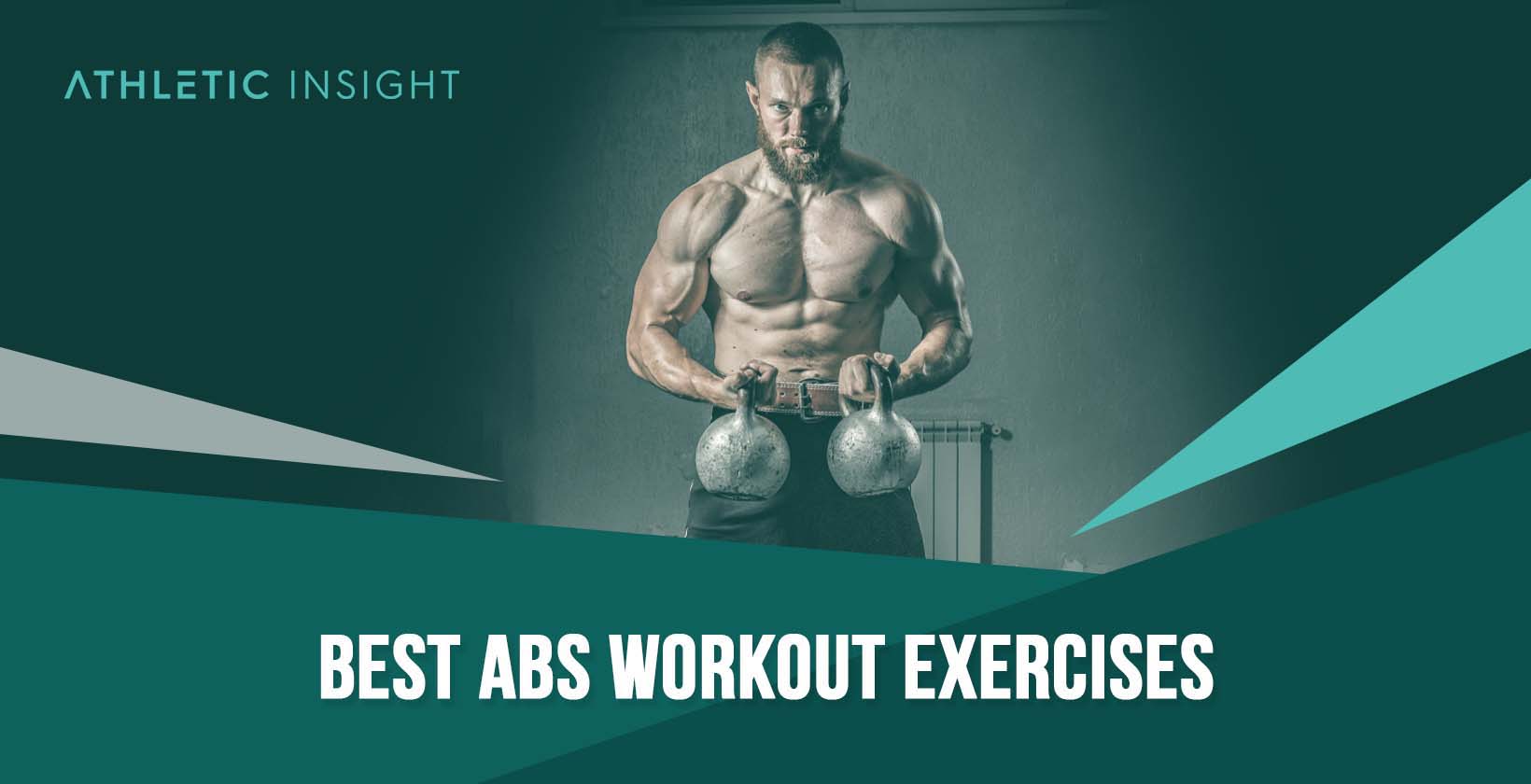Abdominal (abs) workout exercises are strength training exercises targetting the pyramidalis, rectus abdominals, external obliques, internal obliques, and transversus abdominis. These ab exercises can be used to improve strength, increase muscle size and improve definition.
While abs are sometimes an afterthought for gym-goers, the truth of the matter is that your core is critical for every movement you make. Whether you are deadlifting, squatting, or even bench pressing, you need a strong core which is why abdominal muscle development is crucial.
Whether you are a sports athlete, an Olympic athlete, a bodybuilder, or the next Strongman, having a strong core and continuously performing ab workout exercises is a must. The best part about ab workout training is that it can be performed anywhere, even at home.
If you are looking to increase abdominal strength, the best workout for abs muscles is easily the hard and heavy ab workout. Additionally, major compound exercises like the squat are crucial for building strength.
If you are just looking for an at-home program, or a generic abs workout routine you can do with little to no equipment, the hanging knee raise, Russian twist, and plank are perfect ab workout hacks to improve definition and strength.
The most common mistake with ab workout exercises is utilizing improper form or using too much resistance in the form of weight or bands. Both improper form and too much weight will often lead to strained abdominal muscles and even back injuries.
Be sure to check out our entire ab workout review if you are looking to master the ab workout exercise and improve your overall core strength and definition.
- Most beneficial ab workout: Hanging Knee Raise
- Best ab workout for strength: Squats
- Best ab workout for definition: Russian Twist
1. Hanging Knee Raise
While the crunch is a popular ab exercise for beginners, the hanging knee raise takes the crunch to an advanced level for those looking to maximize their workout and see results.
To complete this exercise, start by hanging from a pull-up bar or gymnastic rings with your body straight and using an overhand grip.
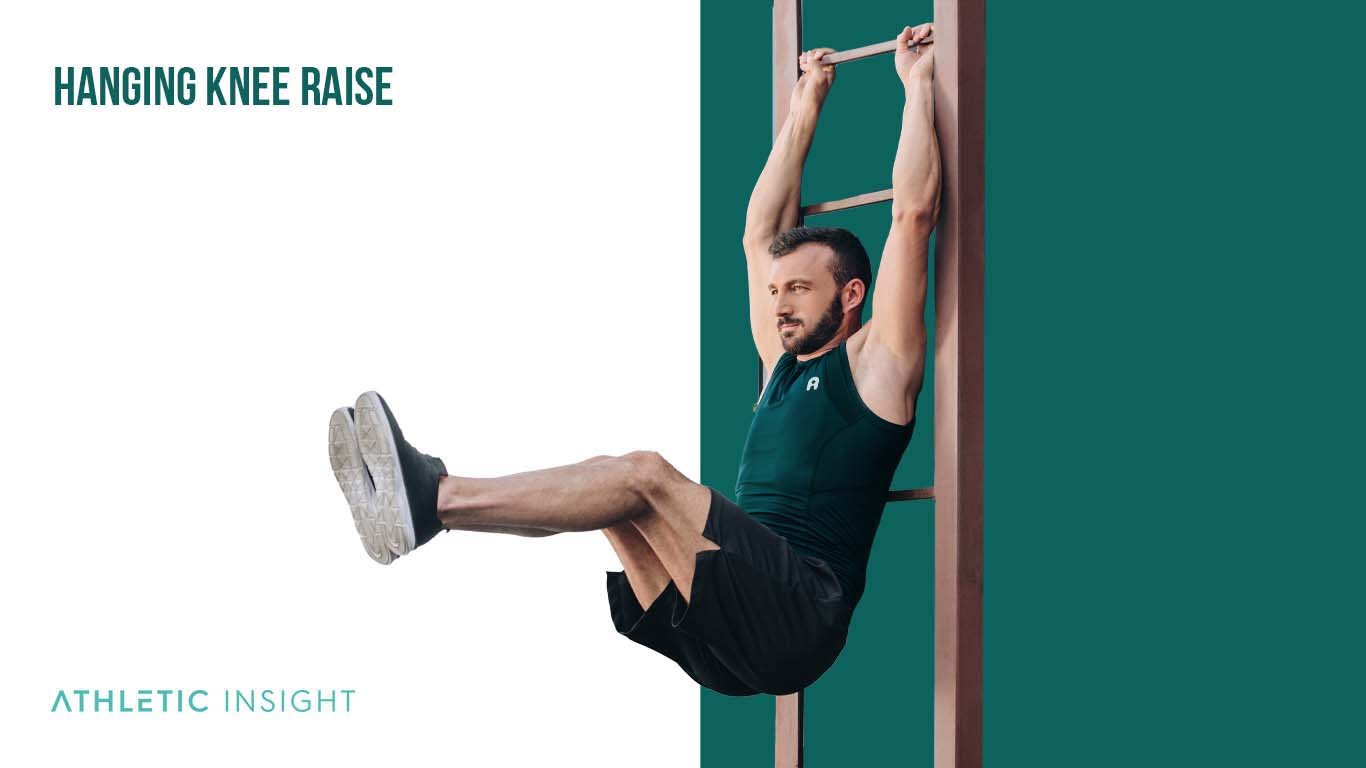
Next, bend both knees so that they are at right angles to the ground below you; use lower abs for stability as well as extra support when raising yourself. Lastly, slowly return down under control.
Be careful to keep your arms engaged as you complete this exercise. While the movement requires you to use your core muscles when pulling up and releasing, you don’t want to let your arms grip the bar without any other effort.
Hanging Knee Raise Variations for Abs Muscles
Instead of sticking with the same old hanging knee raise gym abs workout routine, you can switch it up to get more out of the single workout. Here are some variations to try instead.
1. Hanging Leg Raise
The hanging leg raise is similar to the hanging knee raise, except you focus on one leg at a time and don’t bend at the knee. Instead, you’ll get into the same position but slowly lift one leg up and in front of you before slowly bringing it down again with the other leg firmly planted on the ground.
2. Captain’s chair knee raise
The captain’s chair knee raise is like a combination of the hanging knee raise and a reverse crunch. It’s an immensely popular ab workout because you don’t have to hang from a bar or lie on your back, thus taking the strain off of your back.
3. Parallel Bars Knee Raise
This hanging knee raise variation swaps the singular over-the-head bar for the parallel bars. You will grip each bar with each hand and levitate yourself slightly above the ground. Then, you will perform the knee raise exercise.
4. Hanging Dumbbell Knee Raise
Do not attempt the hanging dumbbell knee raise if you aren’t yet familiar with the hanging knee raise exercise, otherwise, you might hurt yourself. The weights add a bit more resistance and you can gradually increase the weight each time you attempt the workout.
5. Hanging Toes-to-Bar
The hanging toes-to-bar exercise takes the hanging knee a step further by extending your knees upward until your toes reach bar level.
2. Machine Crunch
If you’re looking for a new abdominal exercise to add to your gym abs workout routine that will get your six-pack into shape, the machine crunch is an effective choice.
You will need to first adjust the seat height so that your legs are fully extended and your feet are flat on the footplate of the machine. Your knees should be slightly bent. Then, lean back until your torso is at a 45-degree angle to the floor and hold on to the handles before crunching forward, bringing your chest toward your knees.
It is best to keep your abdominals pulled in so you don’t hyperextend your back. Pause for two seconds and then slowly return to the starting position. That’s one rep, but you should aim for ten at a minimum.
Machine Crunch Variations for Abs Workout Routine
Looking to advance your machine crunches a bit more? Here are two main machine crunch variations that are sure to challenge and engage your abs.
1. Ab Crunch Machine
The ab crunch machine isn’t so much a workout as it is the device you need to complete the workout. However, it allows you to manipulate your body in different positions and add greater resistance to your crunch routine.
2. Smith machine V-up
The Smith machine v-up is a challenging and fun way to tone your abs and strengthen your core. This move is not for beginners, so if you’re just starting, work on your basic abdominal moves first.
3. Pallof Press
This move is challenging but effective, and it’s a great way to work your entire abdominal muscles. You’ll only need either resistance bands or a cable machine to get started, but if you don’t have either, then it’s fine to try without. Then, you’ll want to stand tall with your feet hip-width apart and hold the band in front of you, with your arms straight.
Next, step back a few feet so there is tension on the band and press it against your chest. Keeping your core engaged, pull the band straight out from your chest until it’s fully extended.
Finally, reverse the motion, slowly returning to the starting position. Repeat for reps.
It’s important to remember to keep your back straight and stable during this pallof press and to only press yourself as far as you can go.
Pallof Press Variations for Abs Exercises
This move is a great way to both isolate and strengthens your abs, and it’s simple enough that anybody can do it, but it also has many variations for those looking to advance or modify the exercise. Take a look at some of the best pallof press exercises below.
1. Pallof press (cable or band)
Completing the pallof press exercise without a cable or band is ok for beginners and practicing form, but the cable or band adds more resistance that gives your core a greater workout.
2. Pallof press with rotation
The Pallof press is a great exercise to do if you’re looking for some abdominal strengthening. This technique involves rotating while hanging from the bar, and it’s done by using weights that are attached at each end of your cable pulley system.
4. Cable Crunch
The cable crunch is a great workout for those who want that classic six-pack because it works into the upper and lower abs.
First, find a cable machine with a low pulley. Attach a stirrup handle to the low pulley and stand facing away from the machine. Hold the handle with both hands and bend at the waist until your torso is parallel to the floor.
Then contract your abs and curl your body up towards the handle, squeezing your abs at the top of the movement. Reverse the motion and slowly lower yourself back down to starting position and repeat as necessary. Keep your back as flat and straight as possible to minimize the risk of injury.
Cable Crunch Variations for Abs Muscle Hypertrophy
By switching up the exercises you do, you can keep your body guessing and help prevent boredom. So, here are some cable crunch variations to keep you interested and working hard.
1. Kneeling Cable Crunch
This exercise will help to tone and strengthen your core, without putting too much strain on your back as many other abs workouts do. It’s the most popular variation for people who want to feel the burn but not the pain.
2. Kneeling Cable Oblique Crunch
There are a lot of exercises you can do to strengthen your core, but the kneeling cable oblique crunch is one of the best. It’s simple and effectively targets your oblique muscles for a high-quality burn.
3. Kneeling Cable Alternating Crunch
Use the kneeling cable alternating crunch exercise to fix your posture and improve stability while simultaneously working various muscle groups, including your glutes, lower back, core, and arms.
4. Standing Cable Crunch
The standing cable crunch is a great way to increase your core strength and stability. This exercise also improves lower back alignment, which makes it safe for those with poor posture or chronic pain in that area of their bodies.
5. Decline Crunch
You only need a sloped workout bench or something similar to perform the decline crunch since you need to lie on a downward slope. It’s one of the best ab exercises for building muscle because your upper abs and obliques work harder in the decline position than with a standard crunch.
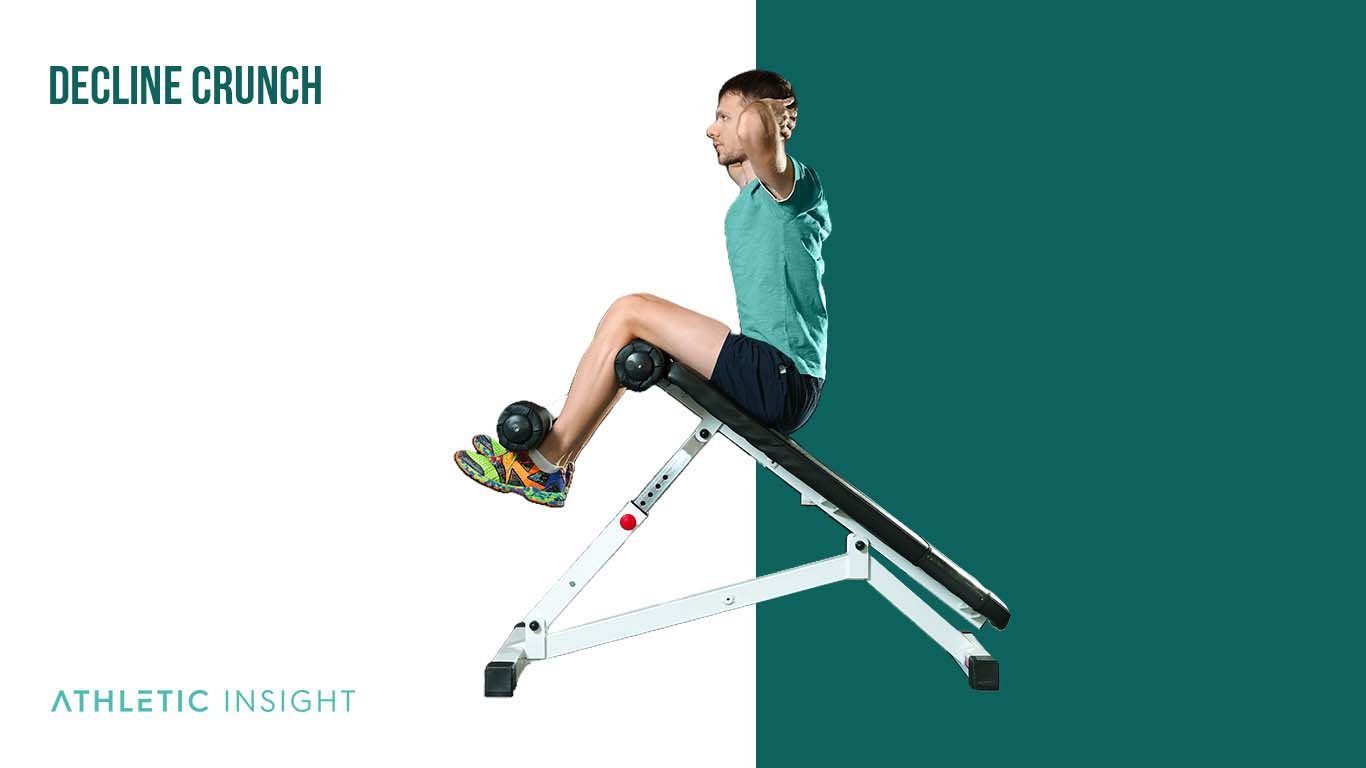
On the bench, secure your legs facing the upward end of the bench so that they don’t move. Then, lie the rest of your body down and tuck your elbows in by your ears, cradling your head. From there, you’ll perform a normal crunch, but don’t exceed lifting your shoulder off of the platform more than four inches.
If you overextend yourself, you risk a potential neck injury, which is the last thing you want when strengthening your core.
Decline Crunch Types for Abs Muscle Growth
If you want to try some decline crunch variations to spice up your ultimate ab workout bodybuilding routine, you have quite a few to choose from to target different ab muscles.
1. Decline Oblique Crunch
For the decline oblique crunch, you’ll get into the same position you would for the standard decline crunch. The only difference when performing this variation is that you will twist to your side when completing the sit-up to hit your oblique muscles.
2. Decline Plate Sit-up
The decline plate sit-up is an excellent weighted exercise to target your ab muscles, as well as the deep core. The exercise is quite popular for those who want to train in lower reps while still yielding the same, if not better, results.
3. Decline Reverse Crunch
The decline reverse crunch is a unique abs workout that works the entirety of your core, especially the hard-to-target lower abs.
6. Squat
How do you achieve that elusive six-pack or toned midsection? Squats are a great way to start. They not only work your abs but also your glutes and thigh muscles. First, stand with your feet hip-width apart, toes pointing forward.
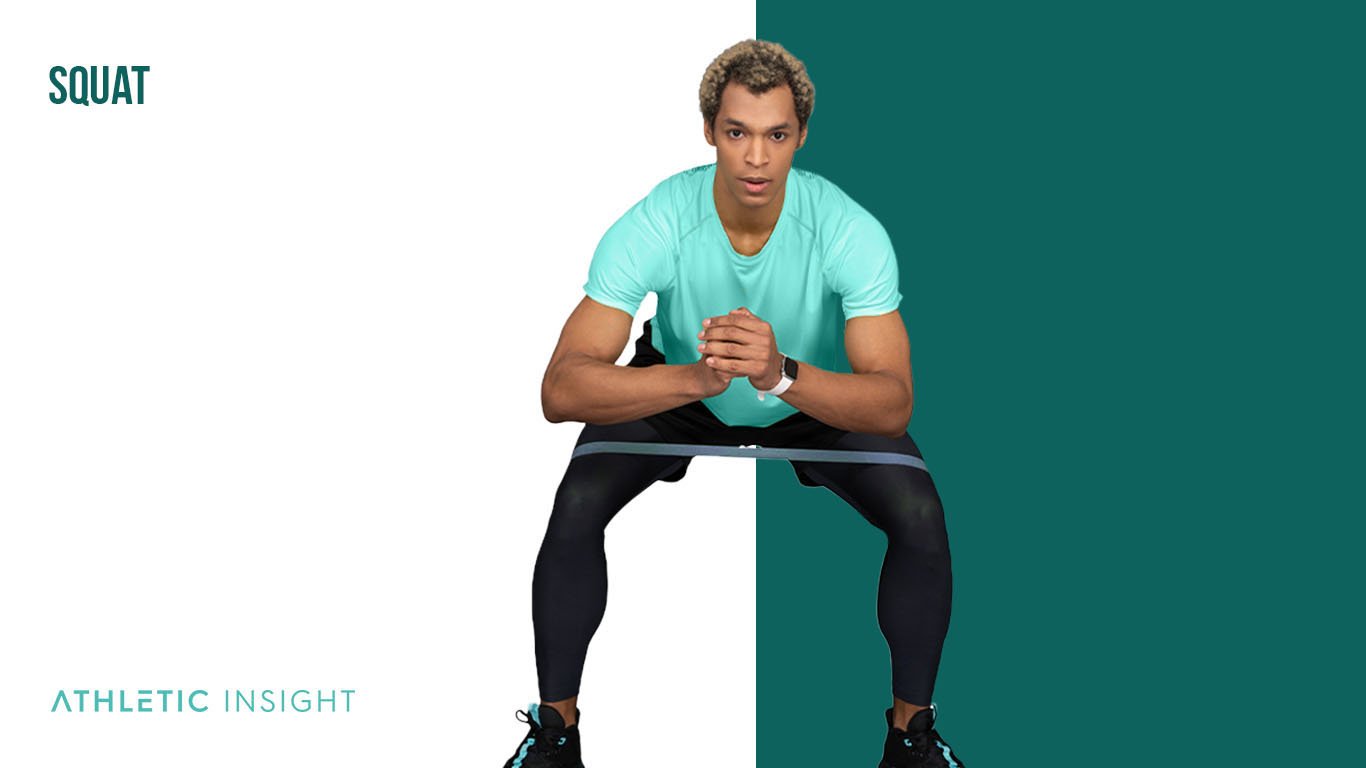
Make sure you keep your back straight and don’t lean too far forward. Next, bend at the hips and knees, lowering yourself down until your thighs are parallel to the ground (or as close as you can get). Hold for a second before rising back up to the starting position.
A common mistake people face when attempting the squat is not focusing on form but on speed. Instead, keep your pace steady and focus on your muscles to get the most engagement.
Squat Variations for Abs Muscles
Not only do squats help you build strong quads and glutes, but they also target your core muscles. Plus, there are many variations of this exercise you can do to make the most of your gym abs workout routine.
1. Barbell Front Squat
The barbell front squat is a great exercise for those who want to strengthen their lower body and lessens the risk of injury to certain joints. It’s an advanced move, but if you’re looking into strengthening your legs or core then this should be at least part of what gets added into your abs workout circuit.
2. Goblet Squat
The goblet squat is a movement that works your quads and glutes. The stability of the core combined with lats helps you keep control over a weight at chest height, while back muscles support it so it doesn’t slip out from under you.
3. Zercher squat
The Zercher squat is an exercise that can take your fitness and power levels to the next level by deadlifting a barbell. However, it’s important to lift the barbell to your lower quads than your knees to avoid potential injury. This is a very popular exercise for bodybuilders and weight lifters.
4. Overhead squat
Holding an overhead squat is a challenge for most people because it requires balance and flexibility. If you’re a beginner, do not start with heavyweights. Instead, try a PVC pipe or similar object to get the feel for the movement and minimize injury.
7. Russian Twist
If you’re looking to tone your abs and strengthen your core, the Russian twist is a great exercise to add to your routine. This move is simple but challenging, and it can be done practically anywhere.
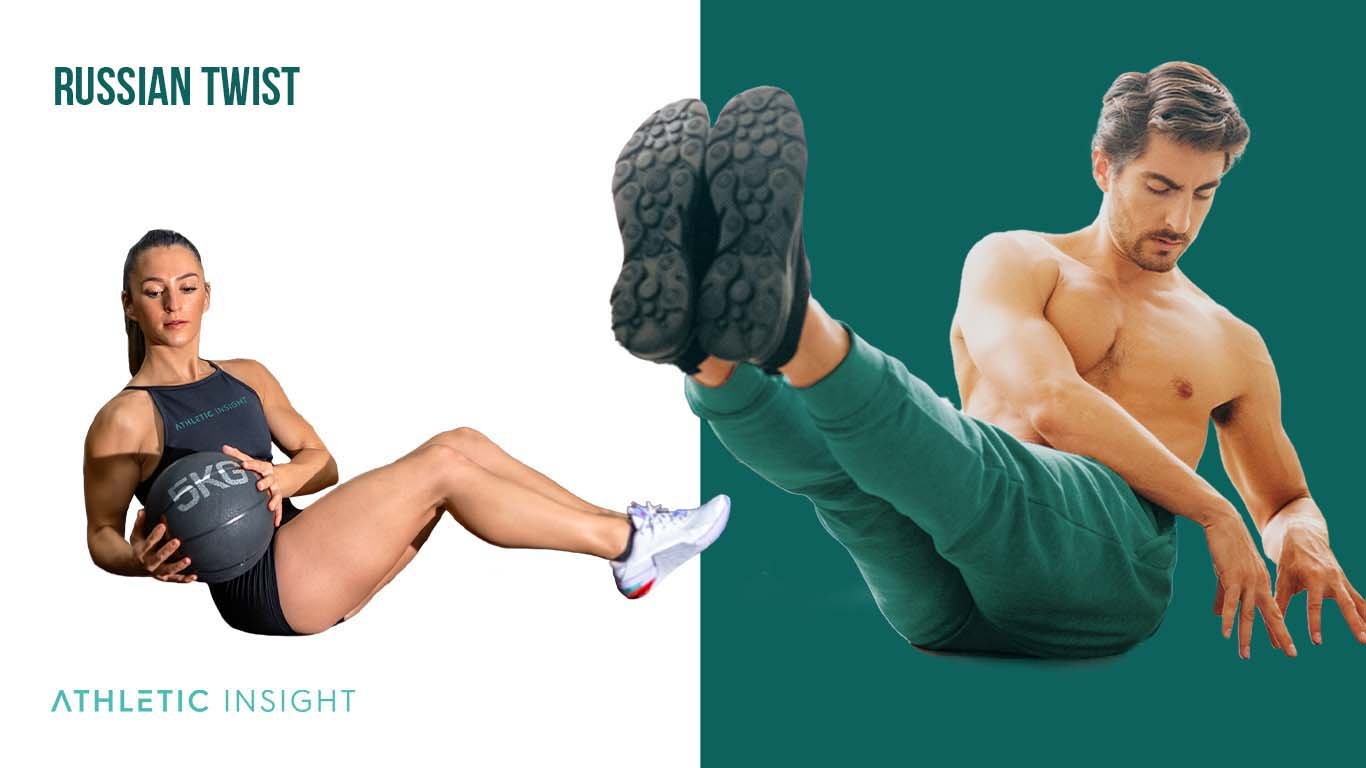
Sit on the floor with your knees bent, feet flat. Lean back slightly and hold your hand against your lower back for support. Then, twist your torso to the right, then twist it back to the center. Repeat this motion, alternating sides for 10-15 repetitions, and finish off by sitting up straight and tightening your abdominal muscles.
Keep your posture in mind when completing a set of Russian twists. If you slouch, you might feel extra sore in your back or potentially pull a back muscle over time.
Russian Twist Variations for Abs Strength
if you’re getting bored with doing the same old Russian twist routine, don’t worry. We’ve got plenty of variations to keep you motivated and your abs happy.
1. Dumbbell Russian twist
The dumbbell Russian twist is the same move as the traditional except you hold onto a dumbbell as you move. As you advance in the move and get more confident, you can increase the weight. Just make sure you don’t overdo it with the weight if you’re unable.
2. Medicine Ball Half Moon
The medicine ball half moon exercise is great for targeting the obliques and your arms. You can hold the medicine ball similar to the standard form, or you can hold your arms out in front of you to challenge them a bit more.
3. Cable Lying Twist on Ball
The cable lying twist on the ball is a great move to help you achieve your ab goals, is simple to do, and doesn’t require any heavy-duty equipment other than some resistance bands and a pilates ball. The exercise challenges your stability along with tightening your core.
4. Standing Cable Twist (high to low)
The standing cable twist works your abs, obliques, and back. It’s also a great way to improve your balance and coordination because you have to focus on your stance, speed, and balance while also keeping your core engaged.
5. Standing Cable Twist (low to high)
The standing cable twist is the same move as above, except you reverse the order of your swing.
8. Ab Roll-Out
The ab roll-out workout is similar to the plank in that it works the same major abdominal muscles, strengthens your core, and improves your muscle flexibility.
For this exercise, you’ll need a rolling instrument, such as a wheel, foam roll, or ball of some kind. You’ll get into the standard downward dog position, making sure your back is straight and even and your core is engaged. Then, you’ll grip your rolling object and slowly begin to roll forward.
You’ll want to watch out for your back. Similar to the plank, you’ll want to keep your back straight to not bring about a back injury. You’ll also do your best to keep your pace slow and controlled while focusing on your breathing.
Ab Roll-Out Variations for Abs Pump
To enhance the smoothness of or intensify your ab roll-out, you can try some ab roll-out variations that include a wheel, exercise ball, and other variations listed below.
1. Ab Wheel Roll-Out
The ab wheel roll-out is essentially the same exercise as the ab roll-out, except you will use the specific wheel equipment. The wheel will make it harder for you to gain control over the extension and roll-in movements, resulting in a more intense workout. The wheel roll-out makes the ab roll-out workout popular among those who want to feel the burn while working their core.
2. Exercise ball roll-out
The exercise ball roll-out is similar to the ab wheel roll-out, except you replace the wheel with the ball. This exercise works your core while simultaneously strengthening your arms.
3. Suspended ab fall-out
Instead of using a ball or wheel to roll out into a plank position, the suspended ab fall-out requires a different equipment piece that you can hold onto and gently fall forward from a standing position.
4. Reverse ab roll-out
Instead of holding onto your rolling object with your hands, you’ll place it under your ankles and slowly roll your legs out behind you rather than extending your body forward into a plank position.
9. Exercise Ball Pike
Pike on the exercise ball is a fantastic way to target your abs and core. It requires shoulder stability, pelvic stability as well as abdominal control for you to create this pike position. So, you’ll want to be able to hold a standard plank position first to get your form correct before attempting the exercise ball pike.
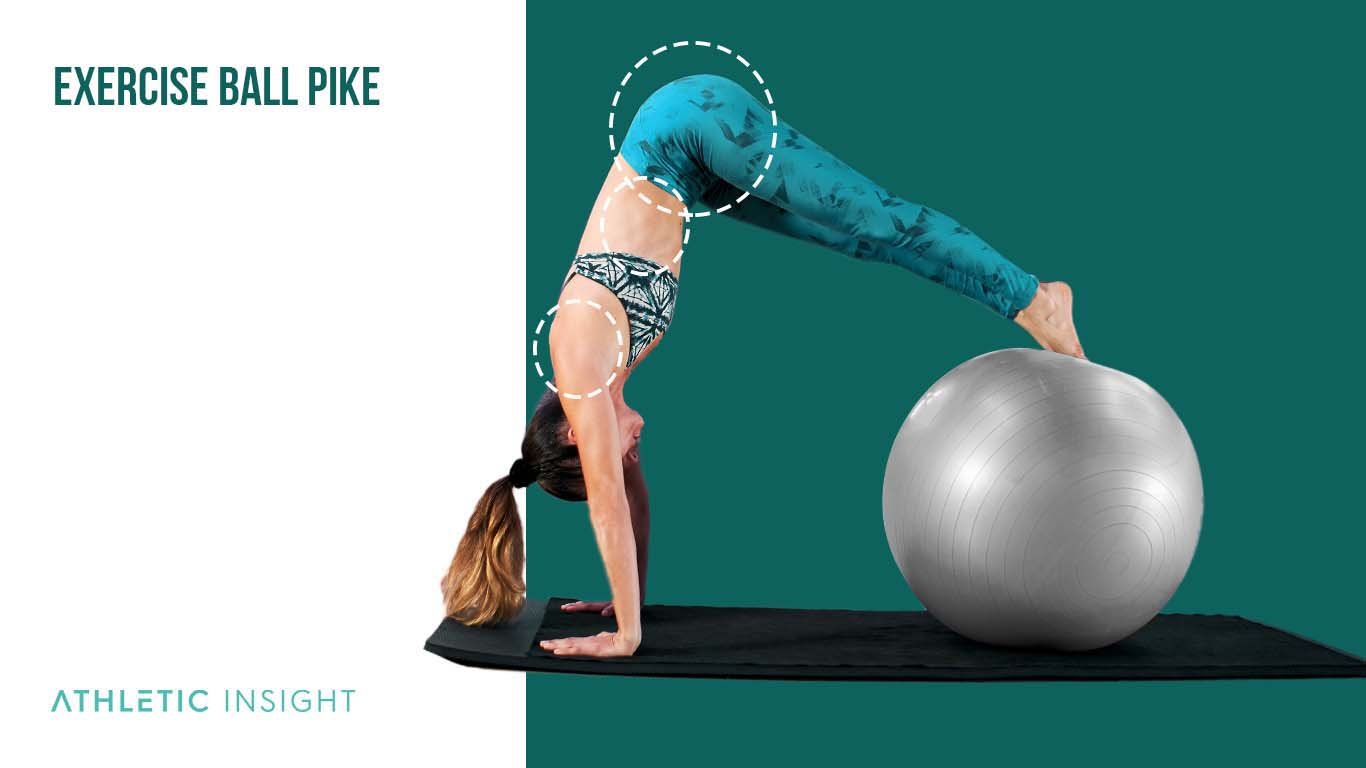
You’ll start with a pilates ball beneath you and slowly roll it out so that your toes balance on the ball and you’re extended in a stable plank position.
From there, you’ll slowly roll into a downward dog position and repeat. But, try not to go any higher than necessary since you want maximum engagement from your muscles at all times and to minimize potential injury from throwing off your balance.
Also, make sure you roll slowly. Speeding up this workout will not lead to the results or engagement you want.
Exercise Ball Pike Variations for Abs Pump
This move is a great way to target your entire core, and there are endless variations that you can do to keep things interesting. Check out our favorite variations below.
1. Medicine ball pike
The medicine ball pike turns up the workout’s intensity because you will use a smaller surface, which requires more focus on balance. It also adds some resistance to your rolling, so you’ll have to work a bit more throughout the reps. Just make sure you maintain the proper plank form at all times to keep from hurting your back.
2. Glider pike
The glider pike replaces the ball with sliders, or you can wear socks and extend out on a slippery surface. The challenge with this workout is that you’re just working against yourself rather than an object, like the ball. You get the best burn for your time with this abs workout variation.
3. Suspended Crunch
Suspended crunch needs more equipment than the initial workout variation because you need to elevate your legs into the plank position. While suspended, you will have to rely on your upper body to support your body weight too, making it the most popular variation for those looking to work more of their body in one exercise.
10. Plank
The plank is a classic move to incorporate into your abs workout routine to target your core. You only need to hold yourself up in the air with straight arms and toes touching the floor. You would do best to remember to keep your back straight while performing the plank; arching your back or dipping your hips while in the stance can lead to a back injury and prevent the intended results.

The plank is arguably the best workout for ab muscles. It is also a core bodybuilding exercise which will yield visible results and help improve balance.
Plank Variations for Abs Pump
The plank abs workout has many variations to increase your workout and target different areas of your abs. For reference, here are some plank variations.
1. Elbow Plank
The elbow plank is a great plank variation when you want to maximize your core engagement. Just make sure you keep your form correct and your body weight even and straight.
2. Side Plank
The side plank is a plank variation that works more of your oblique muscles than the initial form. It’s the most popular plank variation because it’s challenging yet accessible for beginners to fitness buffs.
3. Plank Leg Raise
Plank leg raises do many things. They work the core, glutes, and lower back for an all-encompassing workout. You can do the plank leg raise as a core activation routine before a heavy workout or as a slow burn cool off.
4. Feet-elevated Plank on Ball
The feet-elevated plank is an intense variation on the straight arm planking. The elevated position of your shoes makes it more difficult than lowering yourself to the floor but also emphasizes shoulder muscles that are needed for stability in this position.
5. Elbows-elevated Plank on Ball
The elbows-elevated plank on a ball is an intense and dynamic plank variation that focuses on the upper body as much as it does the core. Your arms and shoulders need to work together throughout your gentle rocking movement to fully engage them and maintain quality posture. Lastly, the elbow-elevated plank of ball is the best dynamic exercise of the bunch.
6. Side Plank Hip Dips
To do this exercise, set up in the side plank from either side as you’ll alternate after your first round. Then, you’ll slowly dip your hip on an exhale and inhale as you return to your original position. This exercise is the best for your hips.
7. Bird Dog
The bird dog is an ab exercise that doesn’t really classify as a plank variation, but more of a plank alternative. To perform a bird dog, one must place their hands and knees on the floor, creating a “table”. Then, the person performing the exercise will extend one arm, or an arm and a leg (usually opposite sides), while keeping the other arm and knee(s) planted on the ground.
Best Abs Workout Exercises for Muscle Growth
If you’re looking to build muscle and definition in your abs, you need to include exercises that work for the entire abdominal muscle group. Below are some workout routines for abs muscle growth you might want to look into.
- Best for Definition: Hard and Heavy Ab Workout
- Best for Sick-Pack Abs: All-in-One Six-Pack Workout
- Best for Lower Abs: Machine Ab Workout
Hard And Heavy Ab Workout
The hard and heavy ab workout regime includes exercises that work into the upper and lower abs with intensity. Here are some examples.
- Hanging Knee Raises: One set of 10 reps with a 10-second rest.
- Decline Reverse Crunches: Two sets of eight to 10 reps with a 15 to 30-second rest
- Plank: One set, hold for one minute, but adjust time as you advance
- Weighted Russian Twist: Two sets, 12-seconds on each side
All-In-One Six-Pack Workout
To achieve that coveted six-pack look, you’ll want to focus on workouts that really target your core, including planks and crunches. Your all-in-one six-pack workout might look a little something like this.
- Plank: One set, hold for 45-seconds, but adjust time as you advance
- Crunches: One set of 12 reps
- Reverse Crunches: One set of 12 reps
- Sit-ups: One set of 15 reps
Machine Ab Workout
Machine ab workouts tend to give you more definition for your lower abs because the equipment lets your body get into different positions to work them. A quality machine ab workout might include these exercises.
- Kneeling Cable Crunches: One set of 15 reps
- Smith Machine V-up: One set of 15 reps
- Hanging Leg Raises: One set of 15 reps
- Decline Reverse Crunch: One set of 15 reps
Abs Exercise Routines for Different Genders and Ages
Working out your abs is important for both genders and all ages. But, the exercises you do to work your abs may vary depending on whether you’re a man, woman, or child.
What Are the Best Abs Exercises for Men?
Since men’s and women’s bodies vary in muscle mass, growth, metabolism, and various other factors that play into working out, men might want to focus on the following ab workouts.
- Best for Upper Abs: V-up crunches
- Best for Lower Abs: Heel tap crunches
- Best for Obliques: Cable crunches
- Best for Hitting Lower and Upper Abs: Hanging leg raises
What Are the Best Abs Exercises for Women?
For women, having a strong and toned core is important for both aesthetic and functional reasons. Unfortunately, many women don’t know how to work their abs effectively, leading to a lack of definition and strength in this area. If you’re looking to get the most out of your ab workouts, here are some of the best exercises you can do.
- Best for Cardio: Mountain Climbers
- Best for Full Core Workout: Plank with hip dips
- Best for Improving Balance: V-ups
- Best for Strengthening Obliques: Side planks (with hip hips)
What Are the Best Abs Exercises for Children?
Do you want your children to be fit and have healthy abs? If so, you might want to try the workouts below. These exercises are easy to follow and will help your little ones get in shape in no time.
- Best for Safety: Plank
- Best for Lower Abs: Leg raises
- Best for Beginners: Crunches
Is There a Difference Between Abs Exercises for Different Athletes?
Different athletes require different types of abs exercises in order to see improvements and prevent injuries. For example, a swimmer will need to focus on abs exercises that will look quite different from what a runner might want to work on to help them propel forward in the water better and quicker.
What Are the Best Abs Exercises for Calisthenics?
Since calisthenics relies on your body weight, you’ll want to practice workouts that can stabilize you, improve your flexibility, and enhance your coordination. Here are the best abs exercises for calisthenics.
- Best for Building Flexibility in Your Core: Ab roll-out
- Best for Balance: Cable lying twist on the ball
- Best for Coordination: Standing cable twists
What Are the Best Abs Exercises for Swimming?
A strong core helps you feel powerful while swimming. It makes it easier to pull, push and kick through the water while also helping to keep you aligned. Here are some of the best abs workouts to get that swimmer’s core.
- Best for Stability and Alignment: Plank
- Best for the Obliques: Side plank with overhead reach
- Best for Lower Abs: Decline reverse crunch
- Best for Full Abs: Hanging leg raises
What Are the Best Abs Exercises for Runners?
Strong abs are a must for any runner. They increase the stability of your hips, pelvis, and even knees during running. This means you’ll be able to run faster and more confidently. Below are some of the best abs exercises for runners.
- Best for Building Stability: Side plank
- Best for Pelvic Stability: Exercise ball pike
- Best for Working into the Hips: Knee to elbow plank
What Are the Best Muscle-Building Exercises for Other Body Parts?
While working on your core is important, it’s also vital to work on other areas of your body to stay healthy. Here are workouts for other body parts you might want to consider.
- Best for Arms: Chin-ups
- Best for Legs: Squats
- Best for the Back: Bent-over barbell row
- Best for the Butt: Barbell glute bridge

